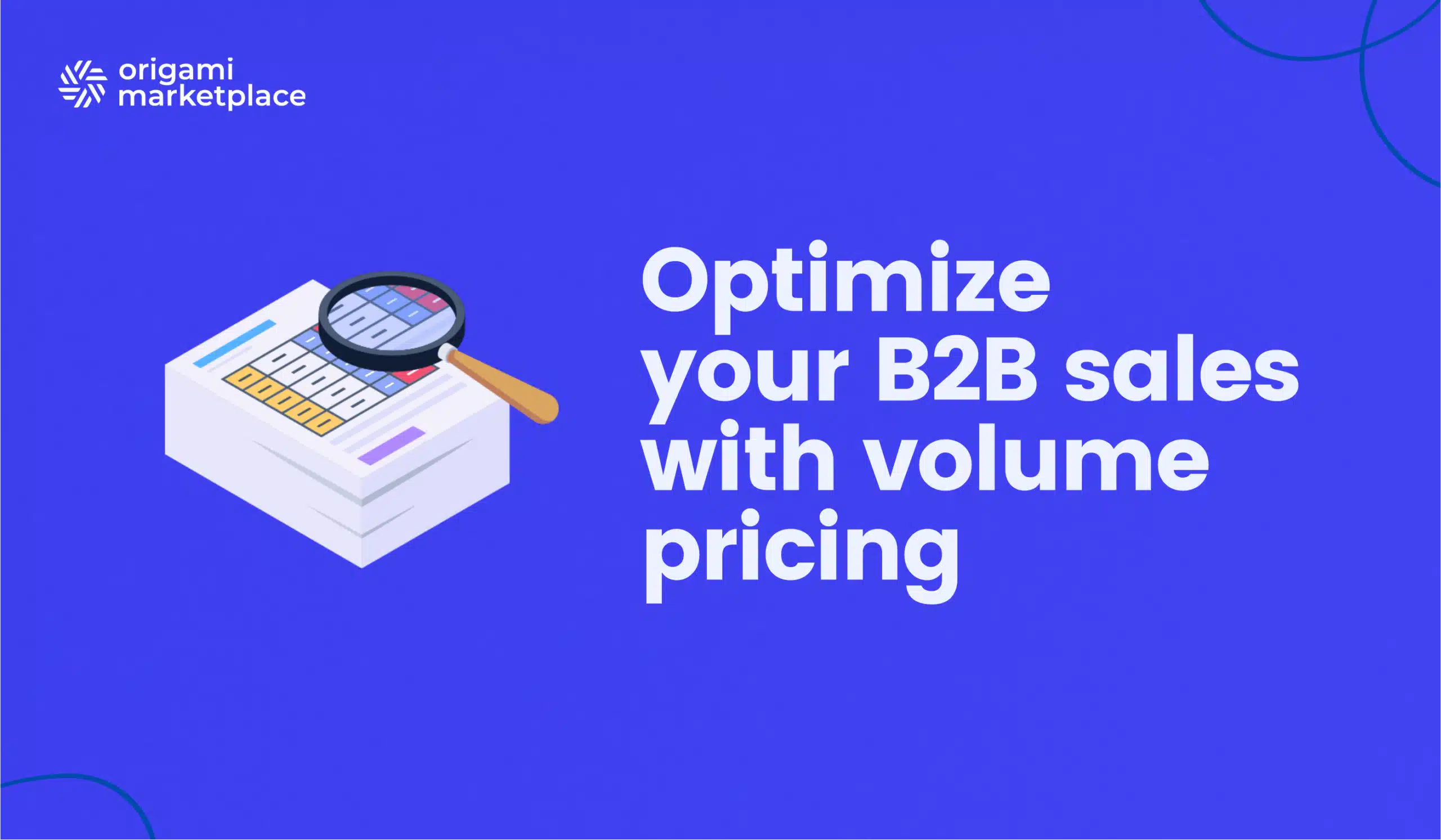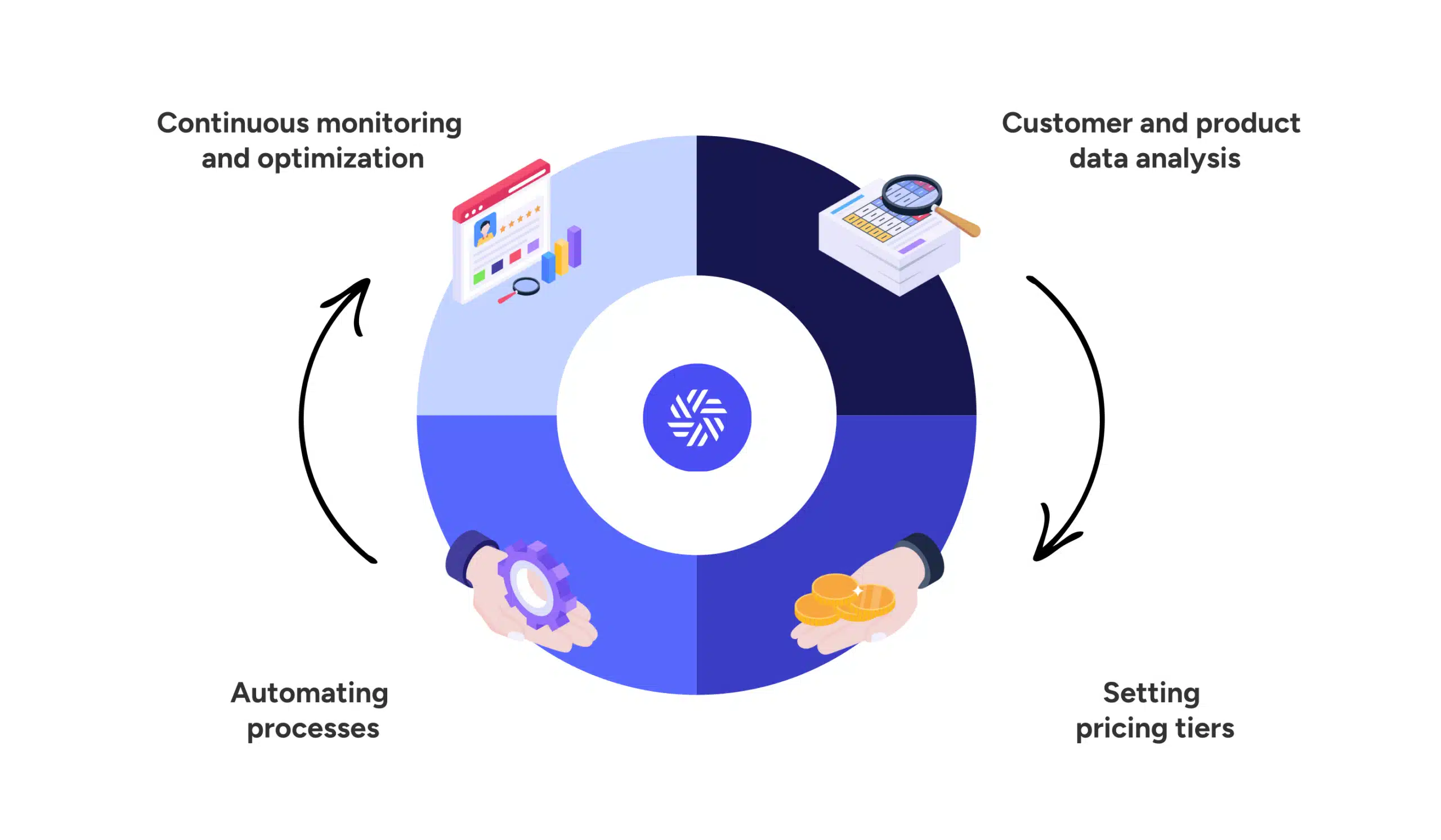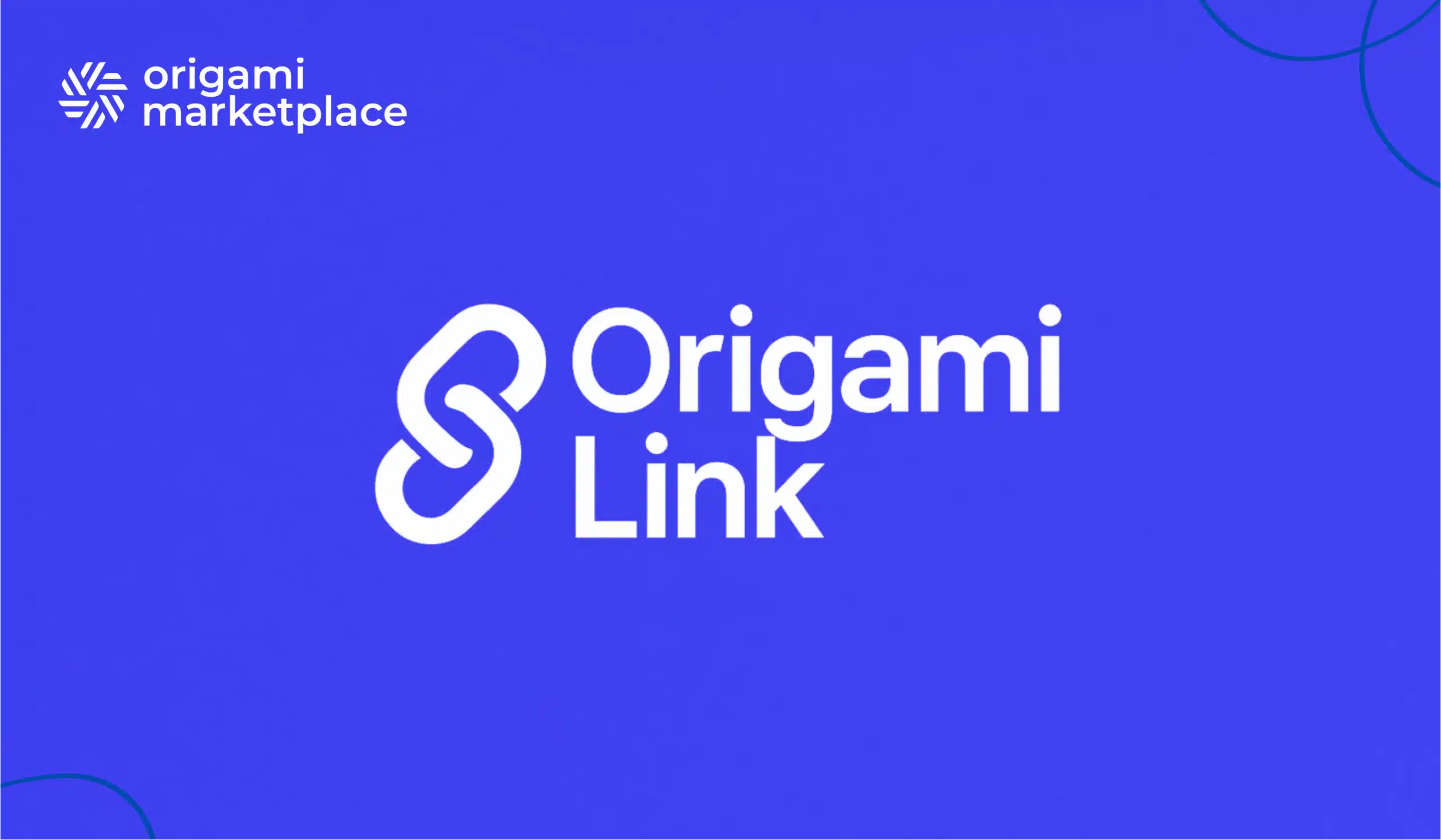Optimize your B2B sales with volume pricing
- Arnaud
- 9 minutes reading

Volume pricing, or tiered pricing based on ordered quantities, is a crucial strategy for boosting your business sales. By offering discounts based on order volume, you encourage customers to place larger orders, enhancing their loyalty. Learn how to maximize the benefits of this approach to increase your revenues with a B2B marketplace and better meet the needs of your professional clients.
👋 No time to read the full article? Find the article summary here.
1. What is volume pricing?
Volume pricing is based on a simple concept: the more a customer buys, the lower the unit price becomes. This model is particularly suited to B2B transactions, where bulk purchases are common and essential for optimizing procurement costs.
Benefits for buyers:
- Reduced unit costs: Savings from bulk orders enable companies to better manage their budgets.
- Stock optimization: Buying in large quantities helps maintain sufficient stock levels, reducing the risk of shortages.
- Operational efficiency: Bulk purchases reduce the need for frequent orders, streamlining procurement processes.
- Volume-based rewards: The more units a buyer orders, the better the price they receive.
Benefits for sellers:
- Increased order sizes: Encouraging customers to buy in larger quantities generates higher revenue per transaction.
- Improved stock management: Rapid inventory turnover through bulk orders prevents overstocking and optimizes warehouse capacities.
- Strengthened business relationships: Offering tiered pricing demonstrates your commitment to meeting the specific needs of professional clients, fostering long-term partnerships.
“Volume pricing is a critical lever for maximizing sales performance in a B2B environment, especially within a B2B marketplace. This model stimulates demand by encouraging customers to purchase larger quantities through tailored discounts. In a context where margins can be tight, it is crucial to carefully structure discount tiers to ensure profitability. Solutions such as those offered by Origami Marketplace make it easier to implement this strategy, providing flexibility and precision in price management. This not only meets the expectations of professional buyers but also optimizes cash flow and stock management.”

Alexandre Duquenoy
→ Connect with our B2B solutions expert.
2. Why integrate volume pricing in a B2B marketplace?
Integrating tiered pricing in a B2B marketplace is not just about competitive pricing; it’s a strategic tool that helps to:
- Increase revenue: Customers are encouraged to buy in larger quantities to benefit from discounts, thereby boosting overall sales.
- Enhance customer loyalty: Offering advantageous prices for bulk orders strengthens commercial relationships and encourages repeat purchases.
- Mitigate competition: Competitive and tiered pricing can deter customers from turning to competitors, especially when offering terms tailored to their specific needs.
Moreover, this strategy can have a multiplier effect in specific scenarios such as periods of high demand (seasonality), product launches, or targeted promotions.
Download our free requirement specification template
Access essential functionalities to successfully build your C2C, B2C, or B2B marketplace. This simple-to-use backlog template will support you at every project stage.
3. Types of volume pricing in a B2B marketplace
There are several ways to structure a tiered pricing offer depending on products, customer segments, and business objectives:
- Quantity-based discounts: This is the most common method. Discounts are applied based on defined order thresholds. For example: 5% discount for orders of 100 units, 10% for 500 units, etc.
- Bundled pricing: You can offer grouped deals (e.g., 5 items for the price of 4) to encourage larger purchases.
- Custom pricing: For strategic or VIP clients, custom pricing can be applied based on their purchase history and recurring order volumes.
- Promotions for recurring orders: Reward regular customers who consistently order in high volumes with exclusive discounts.
4. How to implement volume pricing in your B2B marketplace
To effectively integrate volume pricing into your marketplace, follow these steps:

- Customer and product data analysis: Start by analyzing customer purchasing behaviors and identify products that are most likely to be bought in large quantities. This helps define relevant and tailored discount tiers for your customer segments.
- Setting pricing tiers: Create quantity tiers for each product or product group, considering the profitability of each tier. For example, a product sold individually might have a 5% discount starting at 50 units, then a 10% discount at 200 units.
- Automating processes: Use automated pricing management solutions to facilitate the implementation and adjustment of tiered prices. Automation ensures accurate price calculations based on ordered volumes and allows customers to instantly see the discounts applied.
- Continuous monitoring and optimization: Regularly measure the performance of your volume pricing strategy. Analyze metrics such as average order size, reorder rates, and impact on profit margins. This allows you to adjust discount tiers based on results.
5. Practical examples of successful volume pricing
To illustrate the effectiveness of this strategy, here are a few successful implementations in various industries:
1. Electronics distributors
An electronic components supplier offers tiered pricing for semiconductors:
- 1 to 99 units: Standard price
- 100 to 499 units: 5% discount
- 500 to 1,000 units: 10% discount
- Over 1,000 units: 15% discount
2. Office supplies wholesalers
In the office supplies sector, companies can benefit from bundled pricing:
- 1 box of staples: €2
- 5 boxes of staples: €8 (one box free)
- 10 boxes of staples: €15 (two boxes free)
These types of offers encourage customers to purchase in larger quantities, ensuring faster stock turnover and increasing average order value.
6. Challenges for successful volume pricing
Despite its benefits, implementing volume pricing presents challenges that need to be anticipated.
Profitability management
It’s crucial to ensure that discounts offered do not compromise profitability. Careful cost and margin calculations are essential to define beneficial discount tiers.Operational complexity
Managing volume-based discounts manually can become complex at scale, especially if you handle multiple product lines. Automation is key for consistency and avoiding errors.Demand fluctuations
A surge in orders due to a tiered pricing strategy can lead to stock issues if not properly anticipated. Coordination between pricing actions and stock management is critical.
Volume pricing is a powerful strategy to boost sales, increase order sizes, and retain customers in a B2B marketplace. By offering discounts based on quantities ordered, you meet the specific needs of professional buyers while optimizing stock management and profitability.
To maximize the results of this approach, consider using a scalable solution like Origami Marketplace, which includes price automation features, customer segmentation, and performance tracking. Combining this strategy with other tools such as personalized promotions or deferred payment options can create an even more engaging and profitable customer experience.
Key takeaways:
- Sales increase: Volume pricing encourages customers to place larger orders, increasing average order value.
- Customer loyalty: Offering advantageous volume-based prices strengthens business relationships with clients.
- Better stock management: Rapid stock turnover through bulk orders helps prevent overstocking and improves warehouse management.
- Margin optimization: Carefully adjusting discount tiers can boost volumes without compromising profitability.
- Competitive edge: Tiered pricing helps stand out from the competition and prevents customers from seeking alternatives.
Discover how Origami Marketplace’s API and partner network can transform your business, no matter its size, with its innovative marketplace-based solution.



